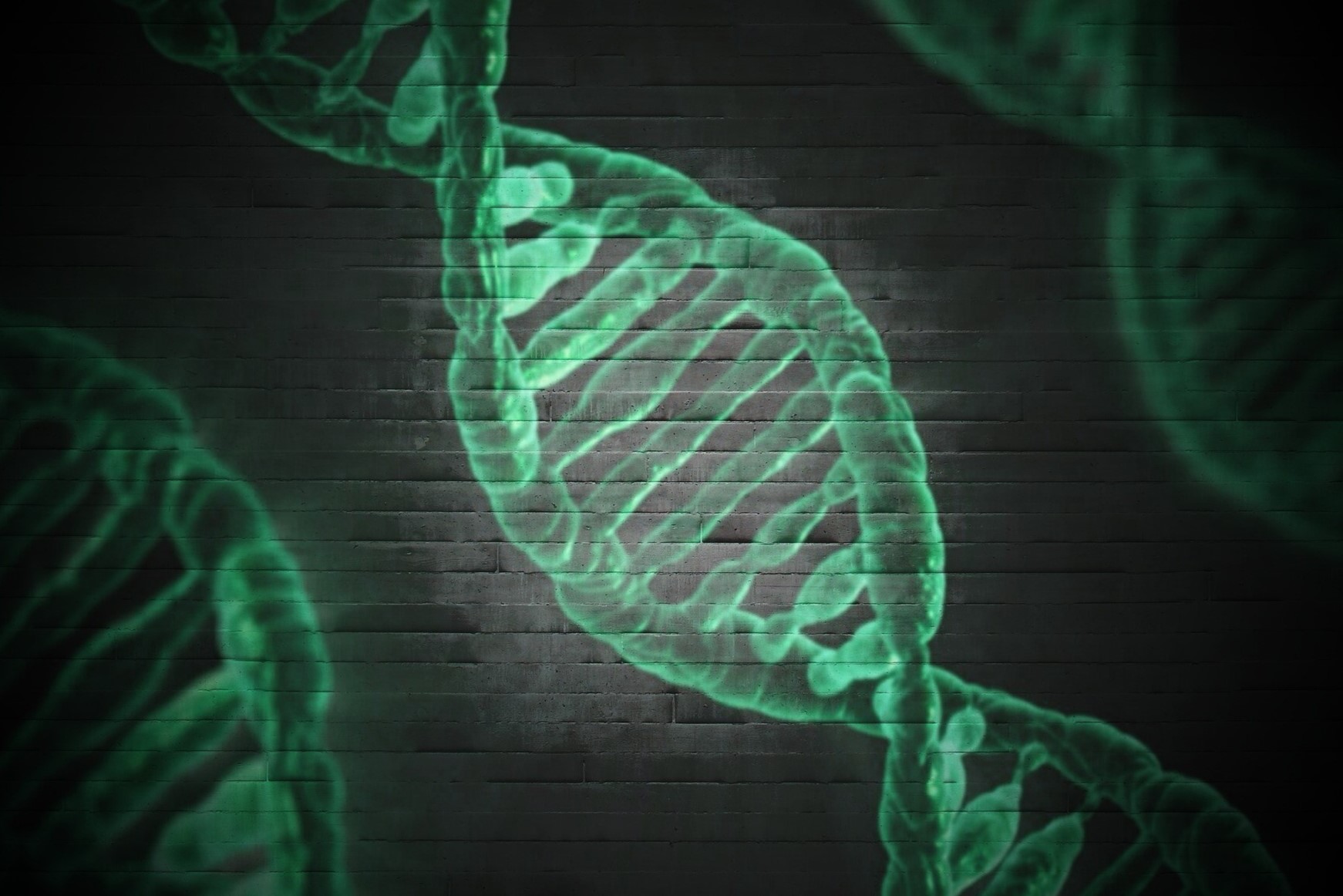
Naegeli-Franceschetti-Jadassohn Syndrome (NFJ) is a rare genetic disorder affecting the skin, sweat glands, nails, and teeth. This condition, inherited in an autosomal dominant manner, results from mutations in the KRT14 gene. People with NFJ often exhibit unique features like reticulate hyperpigmentation, absence of fingerprints, reduced sweating, nail abnormalities, and dental issues. These symptoms usually appear in infancy or early childhood. While the pigmentation may fade with age, other symptoms persist throughout life. Understanding NFJ syndrome is crucial for managing its symptoms and improving the quality of life for those affected. Let's explore 35 key facts about this intriguing condition.
Key Takeaways:
- Naegeli-Franceschetti-Jadassohn Syndrome is a rare genetic disorder that affects the skin, sweat glands, nails, and teeth. It is caused by mutations in the KRT14 gene and can be diagnosed through genetic testing.
- While there is no cure for NFJ syndrome, treatment focuses on managing symptoms and improving the quality of life for affected individuals. This includes moisturizing dry skin, avoiding hyperthermia, and prioritizing dental care.
What is Naegeli-Franceschetti-Jadassohn Syndrome?
Naegeli-Franceschetti-Jadassohn (NFJ) syndrome is a rare genetic disorder that affects various parts of the body. It is a type of ectodermal dysplasia, which means it primarily impacts the skin, sweat glands, nails, and teeth. Here are some key facts to help you understand this condition better.
-
Definition: Naegeli-Franceschetti-Jadassohn syndrome is a rare ectodermal dysplasia that affects the skin, sweat glands, nails, and teeth.
-
Incidence: The estimated incidence of NFJ syndrome is approximately 1 case in 2-4 million population.
-
Inheritance: NFJ syndrome is inherited as an autosomal dominant condition, meaning a single copy of the mutated gene is sufficient to cause the disorder.
-
Genetic Cause: The condition is caused by mutations in the KRT14 gene, which encodes keratin 14. These mutations affect the nonhelical head (E1/V1) domain of keratin 14 and lead to early termination of translation.
Clinical Features of NFJ Syndrome
The clinical features of NFJ syndrome are quite distinctive. These symptoms usually appear early in life and can vary in severity.
-
Reticulate Hyperpigmentation: This is a net-like pattern of dark brown or gray skin coloring that appears in infancy or early childhood. It may fade with age or persist throughout life.
-
Dermatoglyphics: The absence of dermatoglyphics is a distinctive feature of NFJ syndrome. Dermatoglyphics are the patterned ridges on the skin of the hands and feet that are the basis for each person's unique fingerprints.
-
Hypohidrosis: Affected individuals often experience reduced sweating, which can lead to discomfort provoked by heat. This symptom remains constant throughout life.
-
Nail Dystrophy: The nails of individuals with NFJ syndrome may be malformed, brittle, and either thicker or thinner than usual.
-
Dental Anomalies: Enamel defects and other dental anomalies are common in NFJ syndrome. These can lead to early total loss of teeth.
-
Palmoplantar Keratoderma: The skin on the palms of the hands and soles of the feet often becomes thick, hard, and callused, a condition known as palmoplantar keratoderma. Some affected individuals also have blistering on their palms and soles.
Diagnosing NFJ Syndrome
Diagnosing NFJ syndrome involves recognizing its unique clinical features and confirming the diagnosis through genetic testing.
-
Age of Onset: The condition is usually diagnosed early in life due to the inability to sweat and the absence of dermatoglyphics.
-
Diagnostic Criteria: Diagnosis is based on the typical clinical features such as reticulate hyperpigmentation, absence of dermatoglyphics, hypohidrosis, nail dystrophy, and dental anomalies. Molecular analysis can confirm the diagnosis by identifying mutations in the KRT14 gene.
-
Differential Diagnosis: NFJ syndrome can be distinguished from other reticulate pigmentary disorders such as X-linked reticulate pigmentary disorder, dermatopathia pigmentosa reticularis, Dowling-Degos disease, dyschromatosis, confluent and reticulated papillomatosis of Gougerot and Carteaud, and reticulated acropigmentation of Kitamura by its specific clinical features.
-
Family History: Several families with multiple affected members across several generations have been reported. This indicates that the condition can be inherited through multiple generations.
Genetic and Molecular Basis
Understanding the genetic and molecular basis of NFJ syndrome helps in comprehending how the condition develops and affects individuals.
-
Molecular Basis: The disease interval for NFJ syndrome is located on chromosome 17q11.2-q21 and includes a large cluster of keratin genes. Heterozygous nonsense or frameshift mutations in KRT14 segregate with the disease trait in all affected families.
-
Pathophysiology: The mutations in KRT14 lead to early termination of translation, affecting the nonhelical head (E1/V1) domain of keratin 14. This disrupts the structure and function of keratin 14, leading to increased apoptotic activity in the basal cell layer and contributing to the pathogenesis of NFJ syndrome.
-
Ultrastructural Examination: Ultrastructural examination of patient skin biopsy specimens has provided evidence for increased apoptotic activity in the basal cell layer where KRT14 is expressed. This suggests that apoptosis is an important mechanism in the pathogenesis of NFJ syndrome.
-
Genetic Mapping: The disease interval for NFJ syndrome has been mapped to chromosome 17q11.2-q21. Combined multipoint analysis generated a maximal LOD score of 8.3 at marker D17S800 at a recombination fraction of 0. This indicates that the KRT14 gene is located within this interval.
Treatment and Management
While there is no cure for NFJ syndrome, treatment focuses on managing symptoms and improving the quality of life for affected individuals.
-
Symptomatic Treatment: Treatment for NFJ syndrome is primarily symptomatic. Affected individuals need to moisturize their dry skin with emollients and avoid hyperthermia by using appropriate clothing and physical cooling methods during warm periods. Dental care is also crucial to prevent caries and tooth loss.
-
Reticulate Pigmentation Fading: The reticulate pigmentation fades after puberty and sometimes disappears completely in old age. However, hypohidrosis remains constant throughout life.
-
Dental Care Importance: Teeth are always severely affected, leading to early total loss. Therefore, dental care is imperative to prevent caries and tooth loss.
-
Prenatal Diagnosis: Prenatal diagnosis has not been reported so far for NFJ syndrome. This indicates that there is no established method for diagnosing the condition prenatally.
Historical and Geographical Context
NFJ syndrome has been documented in various parts of the world and has a rich history of clinical observation.
-
Historical Background: The syndrome was first described by Naegeli in 1927 as familiärer Chromatophoren-Naevus in a Swiss family. Franceschetti and Jadassohn further analyzed the syndrome in 1954, and Itin and colleagues provided further delineation of its clinical manifestations in 1993.
-
Geographical Distribution: Cases of NFJ syndrome have been reported in various countries including Switzerland, Japan, Italy, Greece, Saudi Arabia, and India.
-
Sexual Predilection: There is no recognized sexual predilection for NFJ syndrome. Both males and females can be affected equally.
Comparing NFJ Syndrome with Other Conditions
NFJ syndrome shares some features with other conditions, but there are key differences that help in distinguishing it.
-
Differential Diagnoses: Differential diagnoses include incontinentia pigmenti, dermatopathia pigmentosa reticularis, dyskeratosis congenita, pachyonychia congenita, and Dowling-Degos disease. These conditions share some overlapping phenotypic features but can be distinguished by specific clinical characteristics.
-
Overlapping Phenotypes: NFJ syndrome and dermatopathia pigmentosa reticularis (DPR) share overlapping phenotypic features. Both are autosomal dominant ectodermal dysplasias caused by mutations in the KRT14 gene. However, DPR is distinguished by lifelong persistence of skin hyperpigmentation and partial alopecia.
-
Clinical Features Comparison: A comparison of clinical features between NFJ syndrome and DPR shows that both conditions share many features but have distinct differences. NFJ syndrome typically fades with age, while DPR persists lifelong. Additionally, NFJ syndrome does not have dental anomalies, whereas DPR does not have them either but has alopecia.
Research and Future Directions
Ongoing research aims to better understand NFJ syndrome and improve the lives of those affected.
-
Research Activities: Research activities on NFJ syndrome include molecular analysis to identify mutations in the KRT14 gene and ultrastructural examination to study the pathogenic mechanisms. These studies aim to understand the molecular basis of the disorder and its clinical manifestations.
-
Disease Interval Genes: The disease interval includes 230 genes, including a large cluster of keratin genes. This indicates that the mutations in KRT14 are part of a broader genetic context affecting keratin expression and function.
-
Keratin Gene Cluster: The disease interval harbors a large cluster of keratin genes. Heterozygous nonsense or frameshift mutations in KRT14 segregate with the disease trait in all affected families. This suggests that KRT14 plays an important role during ontogenesis of dermatoglyphics and sweat glands.
-
Ultrastructural Examination Evidence: Ultrastructural examination of patient skin biopsy specimens has provided evidence for increased apoptotic activity in the basal cell layer where KRT14 is expressed. This suggests that apoptosis is an important mechanism in the pathogenesis of NFJ syndrome.
-
Disease Overlap with DPR: NFJ syndrome and dermatopathia pigmentosa reticularis (DPR) are allelic disorders. Both conditions share key features such as reticulate hyperpigmentation, absence of dermatoglyphics, and palmoplantar keratoderma. However, DPR is distinguished by lifelong persistence of skin hyperpigmentation and partial alopecia.
-
Symptomatic Treatment: Treatment for NFJ syndrome is primarily symptomatic. Affected individuals need to moisturize their dry skin with emollients and avoid hyperthermia by using appropriate clothing and physical cooling methods during warm periods. Dental care is also crucial to prevent caries and tooth loss.
-
Reticulate Pigmentation Fading: The reticulate pigmentation fades after puberty and sometimes disappears completely in old age. However, hypohidrosis remains constant throughout life.
Key Facts to Remember
Naegeli-Franceschetti-Jadassohn Syndrome, a rare genetic disorder, affects the skin, sweat glands, nails, and teeth. Caused by mutations in the KRT14 gene, this condition is inherited in an autosomal dominant manner. Key features include reticulate hyperpigmentation, absence of dermatoglyphics (fingerprints), hypohidrosis (reduced sweating), nail dystrophy, and dental anomalies. The syndrome often presents early in life and can be diagnosed through clinical features and molecular analysis. While there’s no cure, symptomatic treatments like moisturizing dry skin, avoiding overheating, and maintaining dental care can help manage the condition. Understanding the genetic and clinical aspects of NFJ syndrome is crucial for improving patient care and quality of life. Research continues to uncover more about this rare disorder, offering hope for better management and potential future treatments.
Frequently Asked Questions
Was this page helpful?
Our commitment to delivering trustworthy and engaging content is at the heart of what we do. Each fact on our site is contributed by real users like you, bringing a wealth of diverse insights and information. To ensure the highest standards of accuracy and reliability, our dedicated editors meticulously review each submission. This process guarantees that the facts we share are not only fascinating but also credible. Trust in our commitment to quality and authenticity as you explore and learn with us.


